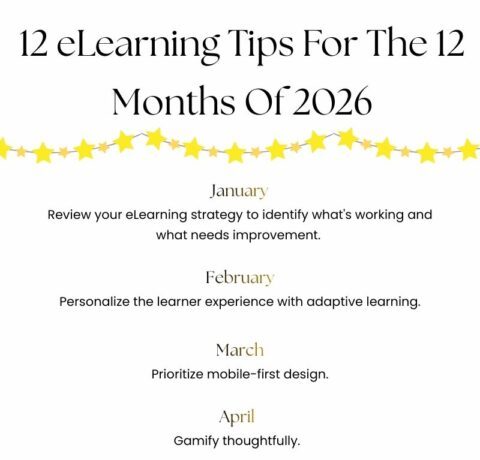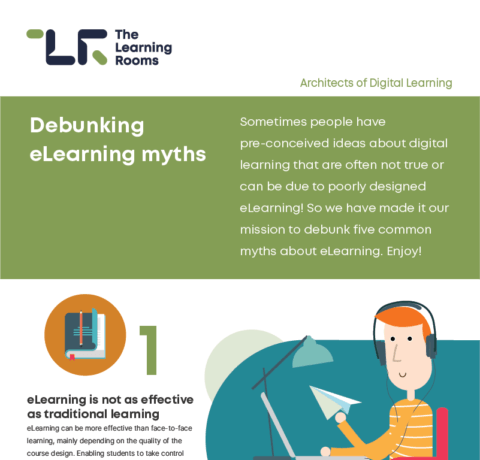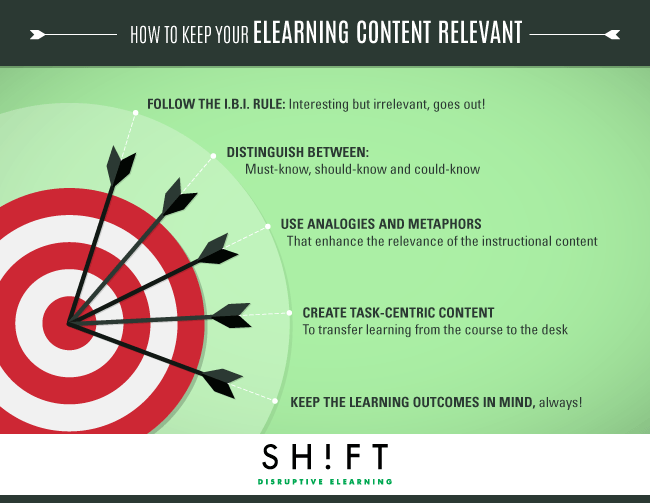How to Keep Your eLearning Content Relevant Infographic
Information overload is a common pitfall that eLearning designers should be wary of. Your goal should be to create a course that packs in only that much information that fulfills the learning outcomes. Relevance increases learner engagement. So Cut the fluff and make more room for the content that really matters. The How to Keep Your eLearning Content Relevant Infographic presents
1. Follow the I.B.I Rule
I.B.I.means "interesting but irrelevant," and you are supposed to apply this rule to every piece of text and image you use on screen. Irrelevant information increases the cognitive load of the course by distracting the learner and making him hunt around for the critical pieces of instructional content.
2. Distinguish between must-know, should-know and could-know information.
Instructional designers are expected to possess this critical skill. If you are just back from a session with the SME, you are possibly armed with a lot of information that he or she thinks is crucial to learn about the subject. Think twice before dumping it all on the learner. Your SME is undoubtedly an authority on the subject, but you are the training expert. You know the learning outcomes of your course. Best, you know the expectations of your learners. So you get to decide which is must-know (critical to achieve the learning outcomes), should-know (important background information that you can give away as handouts), and could-know (nice-to-know information that you may even omit from the course) information.
3. Use analogies and metaphors.
Analogies and metaphors add sparkle to your text by forging connections between seemingly unrelated ideas. Analogies and metaphors enhance the relevance of the instructional content by helping learners quickly grasp the meaning of abstract concepts.
4. Application-focused content.
Your learners are expected to go through your course to learn skills that they can apply to their jobs. To facilitate the most effective transfer of learning from the course to the desk, you have to create application-centric content. In other words, you have to create a course that simulates the learner's reality and makes him work on tasks that he will be expected to perform when he goes back to his workplace.
5. Always keep the learning outcomes in mind.
Your learners have certain expectations from your course. You have to fulfill these expectations. You have to keep the learning outcomes in mind at all stages of designing a course. Whether you are chunking content, designing activities, planning assessments, or choosing images, you have to remember that every element in your course should align with the learning outcomes. Use the "backward design" method to develop your course. This ensures your course remains relevant to your learners always.







You can adjust your cookie preferences here.